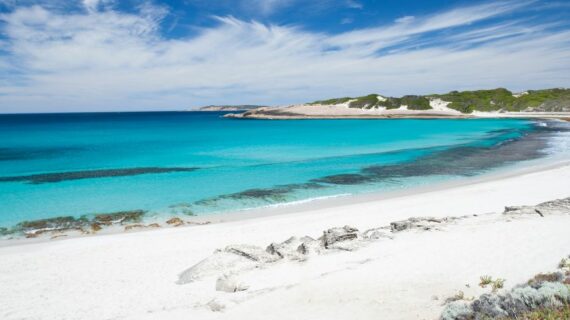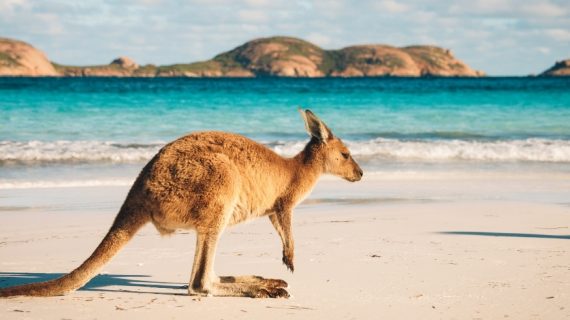The Great Ocean Road in Australia is one of the world’s most scenic coastal journeys. Stretching for 243 kilometers along Victoria’s southern coastline, it connects golden beaches, lush rainforests, and dramatic cliffs. Built by returned soldiers after World War I as a living memorial, the road stands as a tribute to both human resilience and the timeless beauty of nature
Along this route, travelers encounter some of Australia’s most iconic landscapes, including the famous Twelve Apostles: towering limestone stacks rising from the ocean that create one of the country’s most breathtaking coastal views.
Beyond the View: Traveling with Purpose
Beyond its postcard-perfect scenery, the Great Ocean Road Australia offers a deeper kind of travel, rooted in sustainability, community, and a genuine reconnection with the natural world. Hidden among the road are ancient forests, waterfalls, and seaside villages that invite visitors to slow down and explore mindfully. Also, across the region, local communities and eco-conscious businesses are redefining how tourism can protect, rather than harm, the natural world.
Plan Your Trip: Must-See Stops Along the Great Ocean Road
Stretching from Torquay to Allansford, the Great Ocean Road Australia offers an unforgettable mix of coastline, forest, and culture. While every curve of the road hides something new, some places are simply unmissable.
Torquay & Bells Beach
The official starting point of the Great Ocean Road Australia, and Australia’s surfing capital. Visit the Australian National Surfing Museum, explore the Surf Coast Walk, or watch surfers tackle the legendary waves at Bells Beach. Grab a locally roasted coffee at Ocean Grind or The Salty Dog Café.
Lorne
Start along Lorne Pier, then head inland to Erskine Falls or the nearby Teddy’s Lookout for panoramic views of the coastline. For art lovers, stop by the Qdos Arts Gallery, a hidden gem surrounded by bushland that combines sculpture, painting, and an artisan café. End your day with ocean views and local produce at The Bottle of Milk.
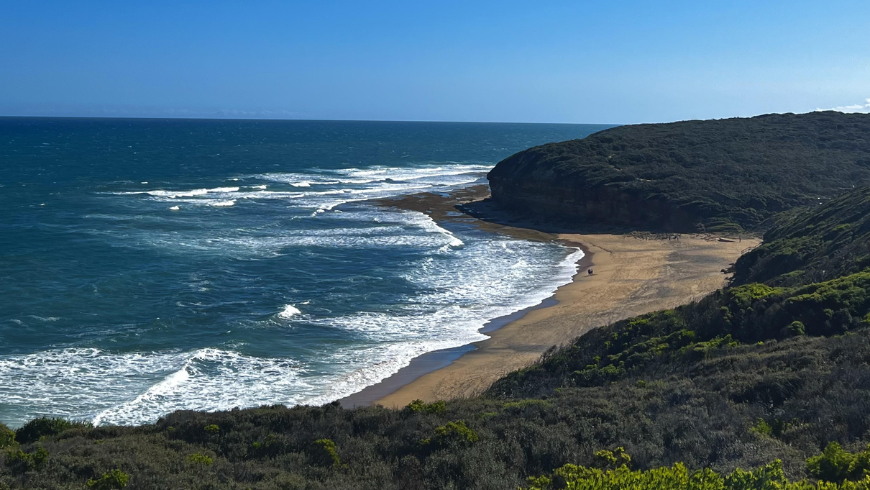
Great Otway National Park
This is where the rainforest meets the sea, a place of waterfalls, tree ferns, and glowworm-filled caves. Walk the Otway Fly Treetop Walk for a little adventure and a panoramic view above the trees, or follow trails to Hopetoun Falls, Triplet Falls, and Beauchamp Falls. In the Cape Otway area, visit the historic Cape Otway Lightstation, Australia’s oldest surviving lighthouse, and spot koalas in the surrounding eucalyptus forests.
Apollo Bay
Nestled between the rolling green hills of the Otways and the turquoise waters of the Southern Ocean, Apollo Bay is the perfect halfway stop along the Great Ocean Road Australia. Spend the morning walking along the beach or visiting the local harbour where fishing boats bring in the day’s catch. Sample fresh seafood or locally roasted coffee at cafés like Cafe 153. For a hands-on experience, visit the Wildlife Wonders sanctuary just outside town — a conservation project that supports native species and offers guided eco-tours through protected habitats. Don’t miss Marriners Lookout for panoramic views over the bay, especially at sunrise.
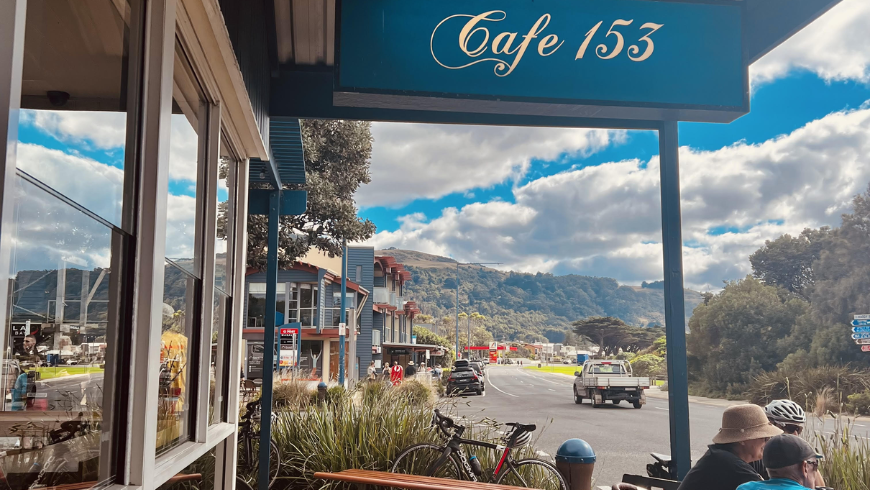
Twelve Apostles
This is the road’s most iconic landmark, best admired at sunrise or sunset when the golden light paints the limestone stacks. Stop first at the Twelve Apostles Visitor Centre, where elevated boardwalks and viewing platforms make it easy to enjoy the scenery safely and with minimal environmental impact. The area has many places that are wheelchair-accessible, and you can explore several short walking trails that connect lookouts along the cliff tops, offering new angles of the rock formations without disturbing the fragile coastline. For a deeper experience, follow the Gibson Steps, a staircase carved into the cliff that leads down to the beach, where you can stand at sea level and feel the immensity of the limestone towers rising from the waves. A short drive west brings you to Loch Ard Gorge, one of the most photographed spots on the Great Ocean Road Australia, where turquoise waters and towering cliffs tell dramatic shipwreck stories. Nearby points of interest include The Grotto, a natural sinkhole and rock pool where ocean and sky meet; and London Arch (formerly London Bridge), a striking coastal formation shaped by centuries of wind and waves.
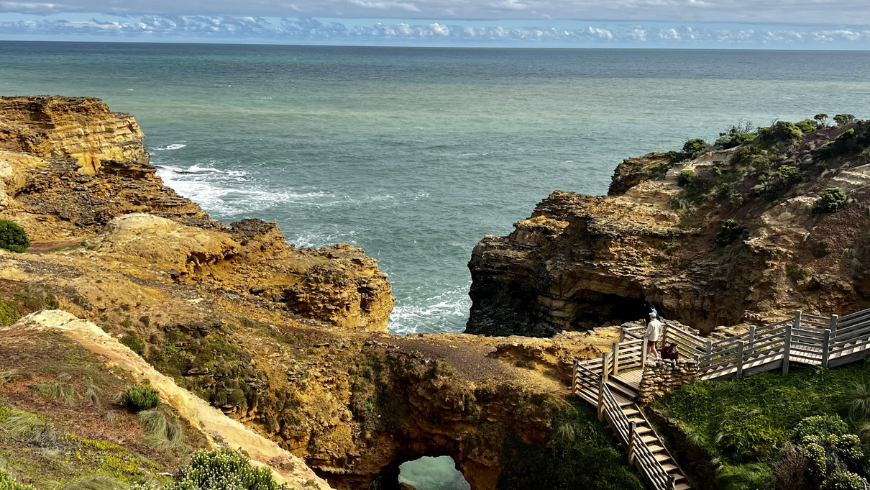
Port Campbell & Port Fairy
Peaceful coastal villages where you can unwind, meet local artists, and taste fresh regional produce. In Port Campbell, take a leisurely walk along the Port Campbell Discovery Walk, which follows the cliffs above the beach and offers spectacular ocean views. Relax by the sheltered Port Campbell Beach, perfect for swimming or a picnic. Drive west to Port Fairy, often voted one of Australia’s most beautiful small towns. Walk along Griffiths Island to see the lighthouse and nesting shearwaters (mutton birds), explore the Whale Bone Gallery for local art inspired by the sea, or visit the town’s historic wharf to watch fishing boats return at sunset.
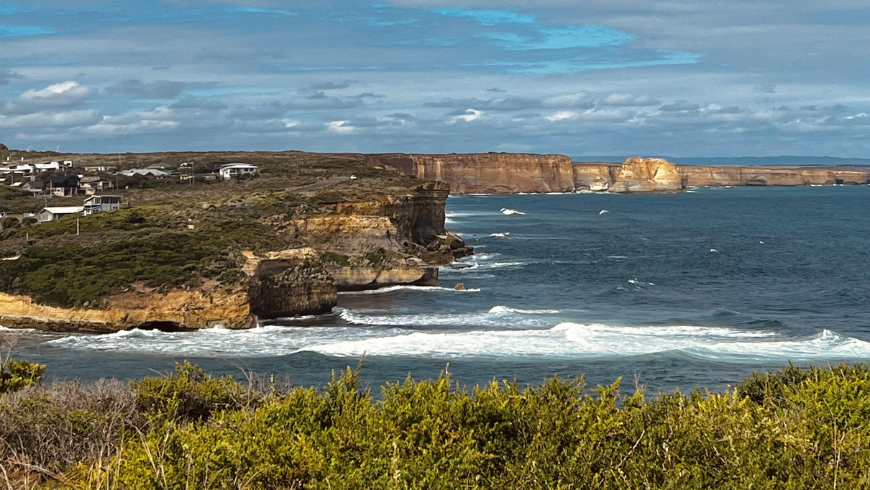
Where to Stay: Eco Escapes and Camping Close to Nature
One of the best ways to experience the Great Ocean Road Australia is to wake up surrounded by its wild beauty, either the sound of waves, the scent of eucalyptus, or the sunrise over the cliffs. Whether you prefer a little more adventure in camping or relaxing in a sustainable lodge, there are options for every kind of traveler who values nature and comfort in harmony.
Camping Along the Coast
Camping offers the purest way to connect with the landscape. You can watch the ocean from your tent, fall asleep to the sound of crashing waves, and step straight onto a trail in the morning. Some of the most scenic and eco-friendly campgrounds are:
- Johanna Beach Campground (Great Otway National Park) – Ideal for beach lovers and surfers, with spectacular views and direct access to the sand.
- Blanket Bay Campground (Cape Otway) – A peaceful forest-meets-sea site with limited facilities to preserve its natural setting. Perfect for those seeking tranquility.
- Aire River East and West Campgrounds – Surrounded by wildlife and wetlands, great for birdwatching and kayaking.
- Wye River Foreshore Camping Reserve – Family-friendly camping close to cafés and walking trails, right beside the beach.
Camping encourages travelers to embrace slow travel, reduce waste, and practice “leave no trace” principles — taking only memories and leaving the land untouched!
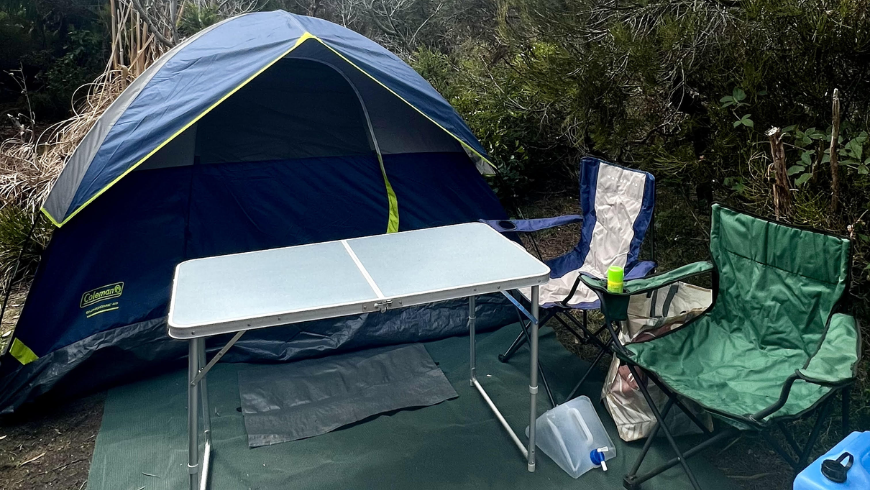
Eco-Friendly Places to Stay Along the Great Ocean Road
Alkina Lodge (Wattle Hill – Luxury Eco-Lodge)
A stunning architect-designed retreat surrounded by native bushland near the Twelve Apostles. Each villa runs on solar energy, collects rainwater, and blends modern comfort with nature, perfect for travelers seeking privacy, design, and sustainability.
Great Ocean Ecolodge (Cape Otway – Conservation Lodge)
A true eco-lodge powered entirely by solar energy and dedicated to wildlife conservation. Guests can spot kangaroos and koalas nearby while supporting local research and habitat restoration projects.
Sky Pods One and Two (Cape Otway – Off-Grid Luxury Pods)
Set on a private wildlife reserve, these glass-fronted pods offer ocean views, solar power, and total seclusion. The property’s reforestation efforts have restored habitat for native species, making it a perfect mix of luxury and low-impact living.
Seafarers Getaway (Apollo Bay – Ocean View Cottages)
Nestled between the hills and sea, Seafarers offers eco-conscious studios and cottages with panoramic coastal views. The property runs sustainably and is known for its wildlife — from dolphins offshore to alpacas in the paddock.
Seacroft Ocean Retreat (Sugarloaf – Off-Grid Glamping)
Perched on a coastal hillside, Seacroft’s solar-powered glamping tents combine comfort and simplicity. Wake up to ocean sunrises, unwind by the firepit, and enjoy an adults-only stay with minimal footprint and maximum peace.
Apollo Bay Eco YHA (Apollo Bay – Budget Eco Stay)
A sustainable, community-minded hostel featuring solar design, rainwater systems, and a rooftop herb garden. Ideal for budget travelers who still want to reduce their environmental impact while staying central.
Making Your Trip More Sustainable
Planning an eco-friendly journey along the Great Ocean Road starts even before you hit the highway. Choose a fuel-efficient or electric vehicle when possible, or share the ride with friends to cut down emissions. Many travelers also rent solar-powered campervans or trailers with built-in renewable energy systems — a great way to stay mobile while minimizing your footprint. Prefer staying put? Base yourself in one of the coastal towns and rent a bicycle to explore nearby beaches and trails at your own pace, enjoying zero-emission travel.
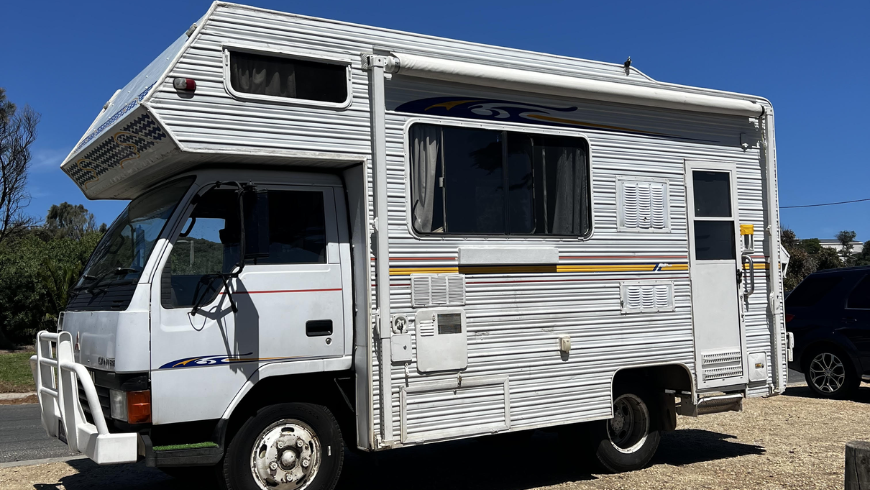
Pack light and bring essentials like reusable containers, a refillable water bottle, reef-safe sunscreen, and biodegradable toiletries. You can also consider offsetting your carbon footprint through certified programs that support reforestation or renewable energy projects in Australia.
Once there, slow down your pace. Spend more time in fewer places, allowing local economies and the environment to benefit from conscious, low-impact travel, support the locals, and don’t leave waste unplaced. Every mindful decision adds up to a more meaningful and sustainable experience.
Final Thoughts
The Great Ocean Road Australia is more than a scenic drive, it’s an invitation to reconnect with the world at its purest. To listen to the ocean’s rhythm, to walk softly through ancient forests, and to witness how communities and nature thrive side by side.
By traveling with care, we not only protect this extraordinary coastline, we become part of its ongoing story of resilience, respect, and renewal. So take the journey slowly, leave only footprints, and let the Great Ocean Road Australia remind you that sustainability begins with gratitude.
Cover image: photo by Fernanda

